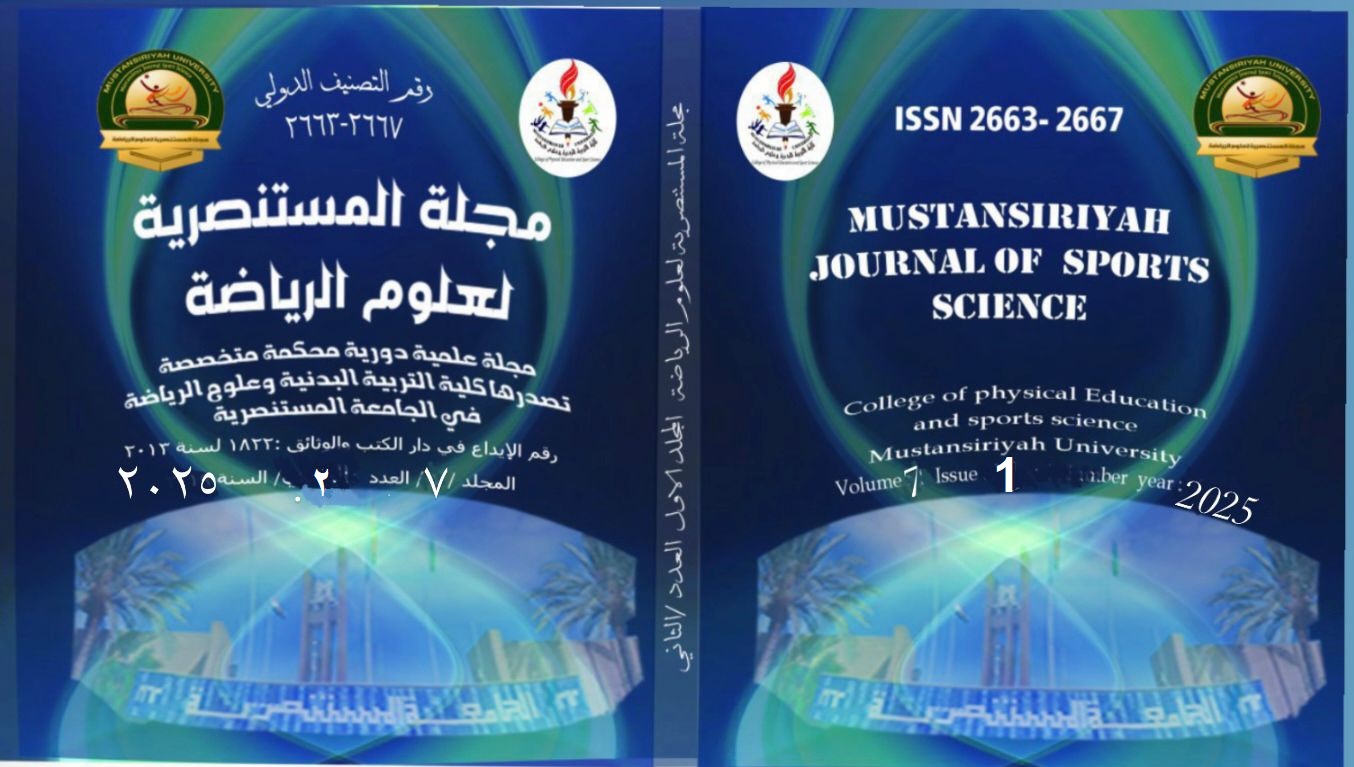SWOT Analysis of the Administrative Work Environment in the Iraqi National Paralympic Federations
Main Article Content
Abstract
Through the experience in administrative work within sports federations and the Paralympic Committee, the researcher found that administrative and technical work complement each other in achieving sports accomplishments. He also observed that the work environment within the Paralympic federations is somewhat ambiguous, as there are no comprehensive studies exploring this environment. Administrative work often suffers from unplanned, spontaneous decision-making.
The aim of this research is to analyze the administrative work environment using the SWOT analysis to identify internal factors (strengths and weaknesses) and external factors (opportunities and threats). The researcher adopted the descriptive analytical method due to its suitability for the nature of the study. The sample consisted of 50 federation members, with 42 respondents completing the SWOT analysis questionnaire.
After sorting and categorizing the responses into four sections—strengths, weaknesses, opportunities, and threats—the researcher concluded that there are several strengths within the Paralympic federations. This indicates that the work environment is reasonably conducive to ensuring the continuity of operations within the federations. However, the federations also suffer from various weaknesses, some beyond their control, such as the lack of infrastructure and facilities that meet the requirements for hosting championships. Other weaknesses are attributed to the management of the federations themselves.
Furthermore, the research identified numerous opportunities that have not been fully utilized to enhance administrative performance, along with several threats that may hinder the federations' operations if not addressed.
Downloads
Article Details

This work is licensed under a Creative Commons Attribution-NonCommercial 4.0 International License.
References
كريا مطلق : الاداة الاستراتيجية مفاهيم وعمليات وحالات دراسية ، بغداد ، دار الكتب للطباعة والنشر ،2003.ص107 .
اياد بنيان محمد . (2013). دراسة وتقويم واقع التسويق الرياضي في أداء بعض الأندية الرياضية العراقية، رسالة ماجستير،. كلية التربية البدنية وعلوم الرياضة، جامعة بغداد.
تامر مصطفى الجزار. (2019). اللوجستيات كنظام متكامل في المؤسسات الرياضية، رسالة ماجستير. الاسكندرية: قسم الادارة الرياضية كلية التربية الرياضية للبنات جامعة الاسكندرية.
توفيق محمد عبدالمحسن. (2010). إدارة المنشآت المتخصصة. القاهرة: دار الفكر العربي.
ثائر احمد هاشم، و حيدر حسن الاسدي. (2024). واقع الاداء الاداري للاتحادات الرياضية العراقية في ظل قانون (24) من وجهة نظر أعضاء الهيئات الادارية. Mustansiriyah Journal of Sports Science، 5(4)، 53-62. doi:https://doi.org/10.62540/mjss.2023.05.03.4.5
حياة سعيد. (2024). تحديات استدامة الاستثمار في البنية التحتية الرياضية في الاقتصاد الجزائري من منظور تحليلي. Wisdom Journal For Studies & Research، 4(4)، 875-891.
صبار محمود شحاذة. (2011). ء مقياس الخصخصة ودوره لتطوير أداء الفرق الرياضية للمؤسسات في العراق، رسالة ماجستير. جامعة ديالى- كلية التربية البدنية وعلوم الرياضة.
صلاح السيد عبد العزيز الشاعر. (2024). تقييم المهارات اللازمة للتكيف مع التعلم الرقمى لتطوير المقررات الدراسية بكلية التربية الرياضية. مجلة تطبيقات علوم الرياضة، 120(10)، 201-223.
علي سلمان عباس. (2024). دور الإعلام الرياضي في دعم تسويق اللاعبين المحترفين بكرة القدم. Mustansiriyah Journal of Sports Science، 4(2)، 170-188. doi:https://doi.org/10.62540/mjss.2020.02.04.17
علي عبد اللطيف علي. (2020). تحليل واقع القيادة الذكية وأسهامها في إدارة الأزمات للجنة الأولمبية والبارالمبية الوطنية العراقية من وجهة نظر أعضاء الاتحادات الرياضية / اطروحة دكتوراه. كلية التربية البدنية وعلوم الرياضة / جامعة بغداد.
فايز العساف. (2012). اساليب الادارة المتقدمة للدعاية الإعلامية. مجلة بغداد للعلوم الاقتصادية(29)، 173-188.
ميسلون زهير حسين، و مهلهل كريم كريم. (2024). اعداد مقياس (تخطيط المناهج التدريبية) من وجهة نظر العاملين في وزارة الشباب والرياضة العراقية. Mustansiriyah Journal of Sports Science، 4(3)، 57-66. doi:https://doi.org/10.62540/mjss.2022.04.03.07

